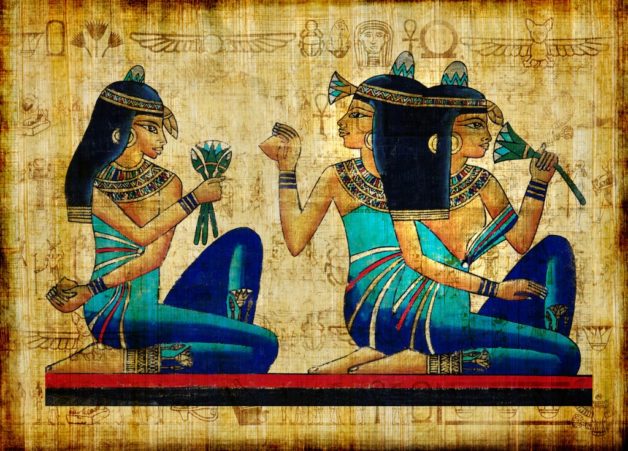By Christina Nunez
A color developed by Egyptians thousands of years ago has a modern-day application as well – the pigment can boost energy efficiency by cooling rooftops and walls, and could also enable solar generation of electricity via windows.
Egyptian blue, derived from calcium copper silicate, was routinely used on ancient depictions of gods and royalty. Previous studies have shown that when Egyptian blue absorbs visible light, it then emits light in the near-infrared range. Now a team led by researchers at the Department of Energy’s Lawrence Berkeley National Laboratory (Berkeley Lab) has confirmed the pigment’s fluorescence can be 10 times stronger than previously thought.
Measuring the temperature of surfaces coated in Egyptian blue and related compounds while they are exposed to sunlight, Berkeley Lab researchers found the fluorescent blues can emit nearly 100 percent as many photons as they absorb. The energy efficiency of the emission process is up to 70 percent (the infrared photons carry less energy than visible photons).

Berkeley Lab scientists measured the temperature rise above air temperature observed in full sun for five pigment-coated samples, each 75 millimeters square. The white and black samples show low and high temperatures.(Credit: Berkeley Lab)
The finding adds to insights about which colors are most effective for cooling rooftops and facades in sunny climates. Though white is the most conventional and effective choice for keeping a building cool by reflecting sunlight and reducing energy use for air conditioning, building owners often require non-white colors for aesthetic reasons. For example, bright-white asphalt shingles are almost never used on sloping residential roofs.
Berkeley Lab researchers have already shown that fluorescent ruby red pigments can be an effective alternative to white; this insight on Egyptian blue adds to the menu of cooling color choices. Further, they found that fluorescent green and black colors can be produced with yellow and orange co-pigments. The new findings were recently published in the Journal of Applied Physics.
In addition to its cooling potential for buildings, Egyptian blue’s fluorescence could also be useful in producing solar energy. Used on windows tinted with the blue, photovoltaic cells on the edges can convert the fluoresced near-infrared energy to electricity.
Substantial research over the years from Berkeley Lab’s Heat Island Group has found that reflective roofs and walls can cool buildings and cars. This reduces the need for air conditioning and mitigates the urban heat island effect. By reflecting the sun’s rays back to space, these cool materials also release less heat into the atmosphere, thus cooling the planet and offsetting the warming effects of substantial amounts of greenhouse gas emissions.
This work was led by Paul Berdahl of the Heat Island Group as part of the Cool Walls project supported by the Electric Program Investment Charge program of the California Energy Commission.
###
Lawrence Berkeley National Laboratory addresses the world’s most urgent scientific challenges by advancing sustainable energy, protecting human health, creating new materials, and revealing the origin and fate of the universe. Founded in 1931, Berkeley Lab’s scientific expertise has been recognized with 13 Nobel Prizes. The University of California manages Berkeley Lab for the U.S. Department of Energy’s Office of Science. For more, visit www.lbl.gov.
DOE’s Office of Science is the single largest supporter of basic research in the physical sciences in the United States, and is working to address some of the most pressing challenges of our time. For more information, please visit science.energy.gov.

